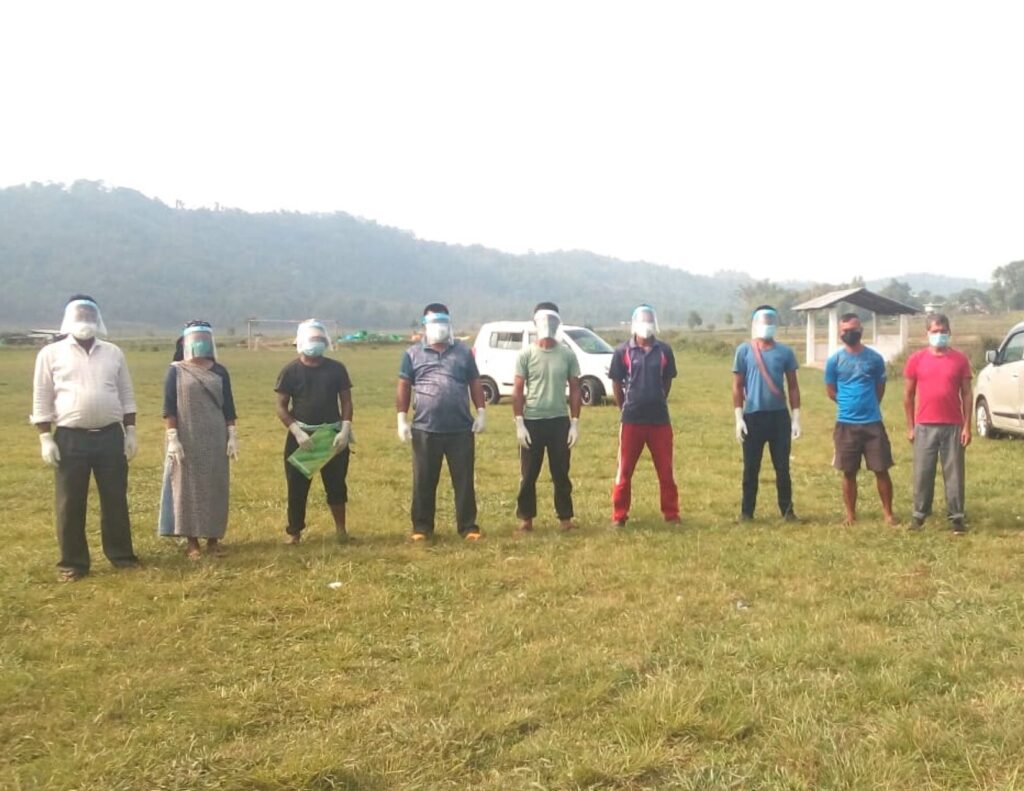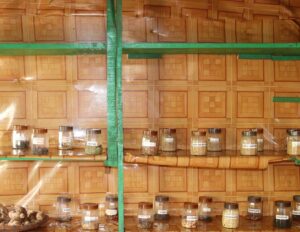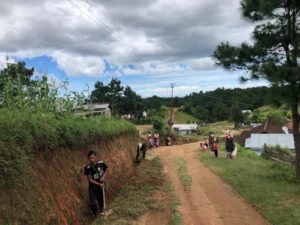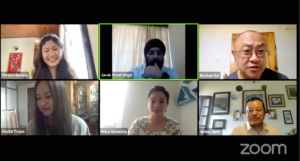Written by: Gratia E Dkhar & Naphishisha Nongsiej
Tackling Covid-19: Lessons learned from Khweng and Liarsluid
Meghalaya has managed to avert high casualties during the first wave of COVID-19. However, the state that maintained low positivity rate soon saw a rapid surge in cases and by 29th April the state had registered a caseload of 16,617. The steep rise in infection and deaths made clear that the second wave of COVID-19 would be more severe than the first. This time around, the disease began spreading into the hinterland where medical infrastructure is scarce. Of the many villages that had to bear the brunt of the second wave was Khweng, a village in Bhoirymbong block, Ri Bhoi District.
The residents of Khweng were coming to terms with the loss of two of its elderly knowledge holders, when on 29th April they received the news of an attendee at one of the funerals being tested positive for COVID-19. In about 14 days more than 130 active cases were registered, an alarming surge for a village that has only about 114 households, indicating a community transmission. The office of the District Commissioner had then declared Khweng and the adjacent village of Liarsluid as a containment zone. With many of the members of the village COVID Committee also testing positive, the two villages immediately formed a 10 member Joint Committee to tackle the virus.
With the high possibility of community transmission, the Committee working closely with the Community Health Centre (CHC) in Bhoirymbong resolved to request all households to self-isolate themselves for a period as determined by the health department. The committee made sure that correct information related to the virus, signs and symptoms, precautions and management were disseminated to people. To avoid any panic, the committee urged its residents to dispel myths and rumour received from unvalidated sources. Daily public announcements and making regular rounds of the village also came handy to treat COVID patients showing symptoms.
Since widespread testing was essential to monitor and reduce viral transmission the COVID Committee, together with the CHC, organised a point-of-care testing at the open field in Liarsluid. The high turnouts of villagers from Khweng and Liarsluid for the voluntary screening helped in early identification of the infected households. More than 1000 community members including adolescents and children were part of the screening. With frequent testing and contact tracing, identification of infected individuals, secondary contacts and isolation was made possible. Secondary exposed individuals were quarantined before they could infect others, preventing further onward transmission of the virus.

The COVID-19 infected individuals were advised home quarantine due to lack of a COVID care centre and a quarantine centre in Bhoirymbong cluster. The use of community hall as a quarantine centre during the first wave was discontinued as it was lacking in basic facilities and inadequate financial support to maintain the centres. In some cases, individual homes were turned into quarantine rooms and the unaffected members were shifted to homes of close relatives who have been tested negative for the virus. Home quarantine proved to be the biggest challenge as most families were living in shared accommodation with limited rooms, using a common kitchen, bathroom and toilet making it impossible to maintain social distance. Though home quarantine has helped in halting the spread to other households in the community, it also saw rapid spread within households, where in some cases all family members of primary contracted the virus within days.
To contain the spread, in a review meeting of NESFAS (North East Slow Food and Agrobiodiversity Society) with the COVID Committee, it was strongly agreed that setting up a quarantine facility had become necessary. NESFAS-REC (Rural Electrification Corporation) Foundation with CHC supported the setting up of quarantine centres at the Khweng Community Hall, Khweng Lower and Primary School and the Liarsluid LP School with a total capacity of 40 beds. Basic facilities like lighting, bed, mosquito nets, water, sanitation and food were arranged for the facility. NESFAS provided the committee with Personal Protective Equipment (PPEs), and four portable oxygen concentrators were donated to the CHC to address any case of medical emergencies that might arise. Random testing was conducted where 18 new cases were reported and were subsequently shifted to the quarantine facility, facilitated in the presence of Dr. T. Sutnga, Medical and Health Officer, CHC, Bhoirymbong. Bah Diengdoh observed that “the rate of positivity drastically dropped once we shifted the patients for isolation in the quarantine centre,” suggesting isolation in quarantine centres combined with other measures effective in containment of the disease outbreak.
The declaration of the area as a containment zone coincided with the sowing month leaving the residents anxious as they were dependent on farming. Livelihood activities were hampered and food security was at risk and villagers were worried about making ends meet. To tackle this problem, the Committee identified families likely to be deeply affected by the pandemic. Households in the community came forward to support those vulnerable families who have lost their source of income. The MLA i.e., Bah George Bakyntiewlang Lyngdoh (Umroi Constituency), MDC, neighbouring villages, well wishers, organisations like World Vision also extended support to the communities with essential commodities that helped households tide over the period of confinement. Bah George was part of several meetings of the COVID team and health department that undertook key decisions for managing the spread of pandemic.
All these efforts bore fruit and the village was restored to green zone with zero active case by the 8th June, 2021. The village recorded a total of 137 cases and a single causality. Bah Anestar Diengdoh, the secretary of Khweng and member of the COVID Committee shared, “the initial rise in the number of cases overwhelmed us. But the COVID Committee was determined to win over the virus and some of the key decisions and measures taken proved effective.”
Cognizance of the looming third wave, the community COVID-19 Committee whose efforts were widely acknowledged by the office of the District Commissioner have recommended an aggressive awareness campaign on vaccination to dispel misinformation and rumours which are the main cause of vax hesitancy among rural communities. Half of the elderly population (above 45 years) in Khweng had received the vaccination prior to the incident. It was found that those who had received the dose were able to recover faster and displayed milder symptoms. The Committee also urged that every village should be supported to maintain a quarantine centre as home isolation in many households would be challenging and would contribute to uncontrollable surge in COVID-19 cases. Apart from efforts to ramp up infrastructure at the grassroots level the experiences have demonstrated the vulnerabilities of communities to access adequate food and it calls for households and communities to reflect and rethink on measures to strengthen their food security. This can begin with inculcating the age old habit of saving resources for emergencies and to strengthen the indigenous food system for increased productivity.
Managing the pandemic can be a daunting task for any village institution, especially when there is minimal preparedness and lack of prior training and infrastructure to handle the crisis of a pandemic. Notwithstanding, traditional village institutions with its community driven and people centric model have been proactive in tackling the crisis. The experience of Khweng and Liarsluid in battling the COVID-19 provide a significant blueprint for action for village institutions to adopt to meet escalating challenges. As the state doubles its effort to ensure quality treatment, the government can build the capacity of these institutions and make them integral part of the decision making to overcome challenges in the fight against the pandemic.
This article was also published in The Shillong Times






Pingback: International Day of the World’s Indigenous Peoples: NESFAS’ “No One shall be left behind' ' initiative strengthens Indigenous communities at grassroots level.North East Slow Food & Agrobiodiversity Society